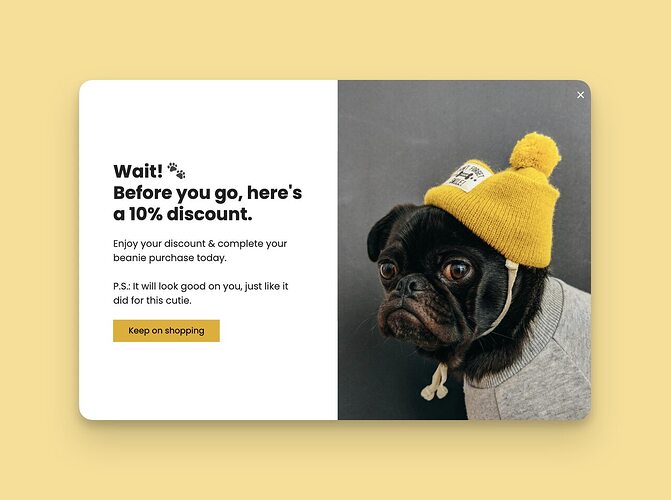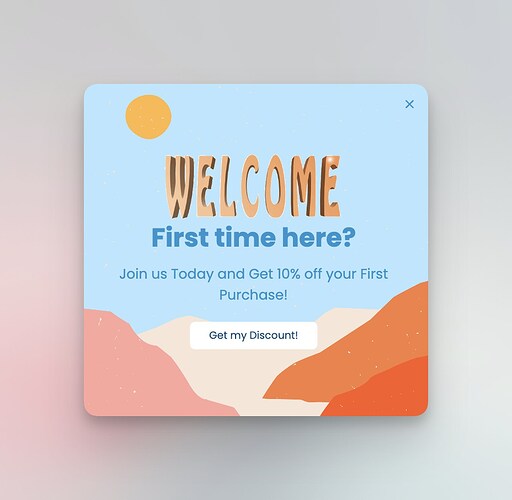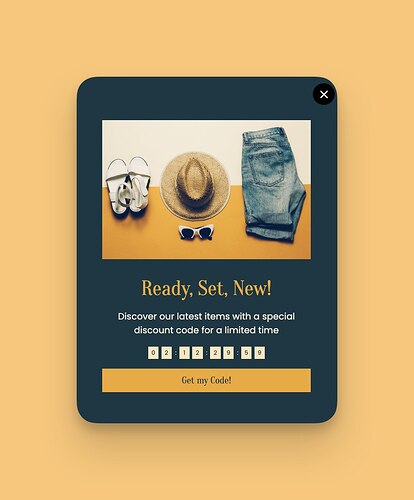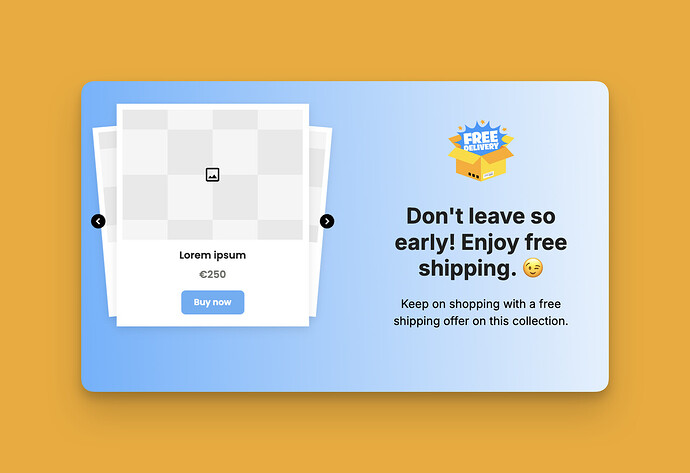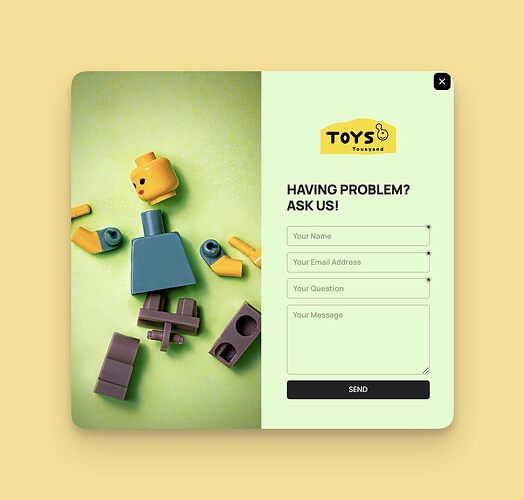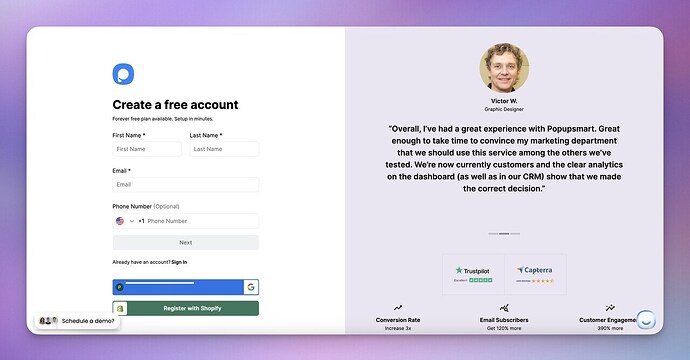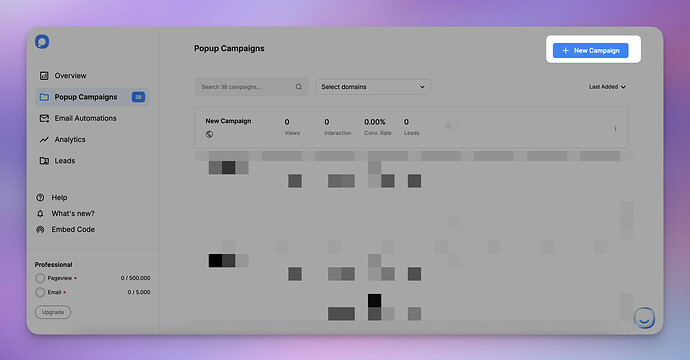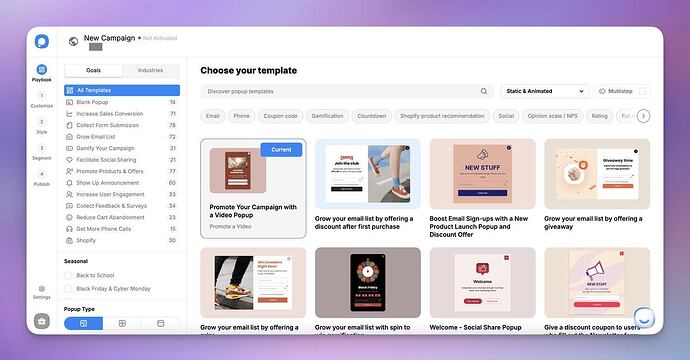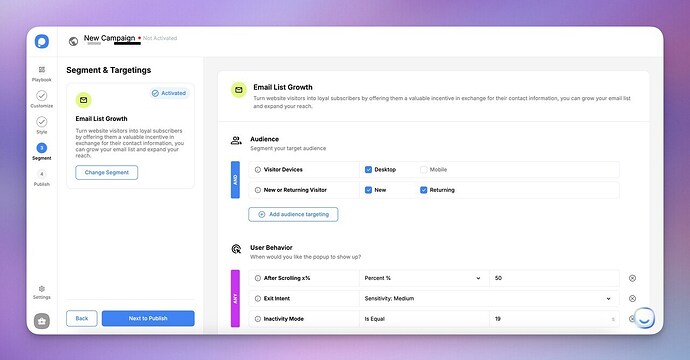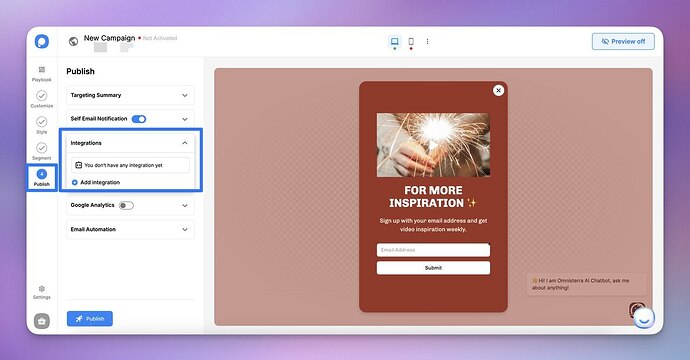Hello everyone,
What are the key steps and best practices for creating an engaging, high-converting landing page on Shopify?
How can I ensure that my landing page stands out and drives results, from choosing the right template to customizing design elements and adding compelling calls to action?
I’ll be really glad if you can provide answers. Thanks in advance.
Hello! Creating an effective landing page on Shopify involves a few essential steps and best practices to ensure it stands out and converts visitors.
Here’s a detailed guide to help you get started:
1. Choose the Right Template:
- Start by exploring Shopify’s built-in themes or third-party templates that cater specifically to landing pages. Look for templates that are optimized for high conversion rates, mobile responsiveness, and fast loading times.
2. Customize the Design:
- Personalize your chosen template using Shopify’s drag-and-drop page builder or third-party apps. Customize colors, fonts, and layout to reflect your brand’s identity.
- Ensure your design is clean and easy to navigate. A clutter-free layout helps keep visitors focused on your call to action.
3. Create Compelling Content:
- Headlines: Craft an eye-catching headline that immediately communicates your value proposition.
- Body Text: Keep your messaging concise and highlight the benefits of your product or service. Use bullet points for easy readability.
- Visuals: Include high-quality images or videos to support your content and make the page visually appealing.
4. Add Strong Calls to Action (CTAs):
- Place clear, bold CTAs at strategic points throughout the page. Use action-oriented language such as “Get Started,” “Sign Up Now,” or “Shop the Collection.”
- Make sure your CTAs stand out with contrasting colors and are linked to the desired action (e.g., sign-up form, product checkout).
5. Optimize for Mobile and Speed:
- Test your landing page’s performance on various devices to ensure it’s mobile-friendly.
- Use tools like Google PageSpeed Insights to check and improve loading speeds by optimizing images and minimizing scripts.
6. Incorporate Trust Signals:
- Add customer testimonials, trust badges, and user reviews to build credibility and trust with visitors.
- Highlight any guarantees or return policies to reduce purchase hesitation.
7. Set Up Analytics and A/B Testing:
- Use Shopify’s built-in analytics or integrate with tools like Google Analytics to track page performance.
- Run A/B tests to experiment with different headlines, CTAs, or layouts and see which version performs best.
Hope this answer covers your question. Have a good one!
Hello ![]()
When I see the topic of creating a landing page on Shopify, I want to participate with my own experience because there is also widespread concern about building and increasing conversion for Shopify stores.
To create a conversion with your landing page on Shopify, we suggest using popups since Popupsmart has approved customer stories.
About how you can do it, I can give some examples, and you can choose whichever fits you:
1. Exit-Intent Popups:
Use an exit-intent popup to capture visitors who are about to leave your site without making a purchase. Offer a special discount, such as “Get 10% Off Your First Purchase!” to encourage them to stay and complete their transaction.
→ Login to Popupsmart for your Shopify store, customize the exit-intent popup template, set the trigger when the cursor moves to exit, and ensure the message is clear and compelling.
2. Welcome Popups:
Greet new visitors with a welcome popup that offers a discount code or free shipping for signing up for your newsletter. This helps build your email list while incentivizing purchases.
→ Set up a welcome popup to appear after a few seconds on the page or as soon as a visitor arrives. Keep the message friendly and enticing, such as “Welcome! Join our mailing list and enjoy 15% off your first order.”
3. Countdown Timer Popups:
Add a countdown timer popup for limited-time offers, such as “Flash Sale! 20% Off Ends in 1 Hour!” to create urgency and drive immediate action.
→ Choose a countdown popup from (Popupsmart’s Shopify Playbook)[Increase Shopify Sales in Minutes with Popupsmart | Popupsmart] and set it to trigger on specific product pages or during special events. Make sure the timer is visible and reinforces the time-sensitive nature of the offer.
4. Cart Abandonment Popups:
For visitors who add items to their cart but don’t proceed to checkout, show a popup reminding them of their items with an extra incentive, like “Complete Your Purchase Now and Get Free Shipping!”.
→ Use an on-exit or timed popup targeting users with items in their cart. Customize it to display the cart’s contents and add an extra push, like free shipping or a discount code.
5. Survey or Feedback Popups:
Use a feedback popup to engage visitors and gain insights into their experience. Ask, “What stopped you from completing your purchase?” and offer multiple-choice answers to gather data.
→ Set up a simple survey popup, choose relevant questions, and position it post-browsing or post-interaction.
Tips for Effective Popup Use:
- Use popups strategically and show only a few at a time to prevent visitor annoyance.
- If your Shopify store supports it, customize the popups based on visitor behavior or preferences for a more tailored experience.
- Ensure your popups are optimized for mobile to maintain a seamless user experience across all devices.
When used effectively, popups enhance engagement and can significantly increase conversion rates. Give them a try, and you’ll see the difference they make!
Hello from me as well ![]()
Perihan touched upon a great point, and I would like to elaborate on this point for you in terms of creating conversion-ready Shopify popups.
Here is the simplest process for creating popups with Popupsmart:
Step 1- Create a Free Popupsmart Account.
Step 2- Create a New Popup Campaign.
This step is for creating a conversion-ready landing page for a brand without affecting the landing page directly.
Or, you can prefer a full-page popup to make it seem like a landing page.
Step 3- Select and Customize a Template:
Choose a template from the gallery based on popup type (e.g., lightbox, full-screen). Customize the content and design in the “Customize” and “Style” steps.
Step 4- Set Up Targeting and Segmentation:
Configure audience targeting and triggers in the “Segment” step. Use pre-made segments or create custom rules for exit-intent, after-scroll, etc.
Step 5- Publish Your Campaign:
Review your settings and click “Publish” to activate your popup. Ensure your website is verified for the popup to display.
Step 6- Integrate and Track:
Connect to other tools in the “Integrations” section and check campaign performance under “Analytics”.
Hello everyone,
Creating a landing page on Shopify can be approached in different ways, depending on your technical skills, budget, and desired customization level. Here are the main methods:
1. Using the Shopify Theme Editor (The Limited Way)
- Step 1: Create a landing page template by navigating to the templates dropdown, choosing “Pages,” and clicking “Create Template.” Name your template and click “Create.”
- Step 2: Add sections to your template using the side menu. Drag and drop elements to create your desired layout.
- Step 3: Save changes and add a new page in Shopify, choosing the template you created.
- Step 4: Customize the content, including the page title, images, copy, and call-to-action (CTA).
Note: This method is straightforward but limited in customization and flexibility.
2. Using Liquid and JSON to Build a Custom Landing Page (The Hard Way)
Overview: This method involves coding with Liquid (Shopify’s template language) and JSON for section files. It allows you to create fully custom pages that go beyond the standard Shopify theme capabilities.
- Requirement: Advanced coding skills or hiring a developer.
- Pros: Full control over the layout and features of the landing page.
- Cons: Time-consuming and requires technical expertise.
3. Using Shogun Page Builder (The Easy Way)
- Step 1: Access Shogun’s dashboard and choose the type of page you want to create. You can start from scratch or use a pre-built template.
- Step 2: Drag and drop elements like text, images, buttons, opt-in forms, and more to build your page. Customize each element with various settings such as margins, padding, animations, and background colors.
- Step 3: Optimize SEO settings by adjusting meta fields, saving your work, and publishing your page to your Shopify store.
Hey everyone! ![]()
If you’re looking into the benefits of creating a landing page on Shopify, you’re on the right track! Here are some clear reasons why it’s a smart move:
- Focused User Experience: Landing pages let you target a single product or offer, making it easy for visitors to know exactly what you want them to do—like buy a product or sign up for a service—without distractions.
- Higher Conversion Rates: With a tailored page aimed at one goal, you’ll likely see better conversions compared to directing traffic to a general store page.
- Easy Integration: Shopify’s landing pages are seamlessly integrated with your existing store setup. This means your product listings, checkout process, and branding stay consistent and user-friendly.
- Customizable Design: You can personalize your landing page to reflect your brand’s identity. Whether you use Shopify’s native tools or third-party apps, creating something unique is totally doable.
- Mobile Optimization: A huge chunk of users shop on their phones, so it’s great that Shopify landing pages are responsive and look awesome on all devices.
- SEO Benefits: A well-optimized landing page with targeted keywords can help boost your organic traffic—a win-win for visibility and sales!
- Performance Tracking: Shopify supports analytics tools like Google Analytics, so you can monitor how your landing page performs (page views, conversion rates, etc.) and tweak things to improve.
- Quick Setup: The drag-and-drop builder makes it simple for anyone to create a page quickly—no coding skills are needed.
- Lead Generation: You can easily add forms to collect emails and build your mailing list, which is perfect for future marketing campaigns.
Hope this helps you see why creating a landing page on Shopify is beneficial! Feel free to ask if you have more questions or need tips. ![]()
It’s amazing to hear such advice and methods.
To be honest, this was more than I expected, so I appreciate all your suggestions and inspiration for giving me a hand while creating a landing page on Shopify.
Thank you for all your help and effort.
